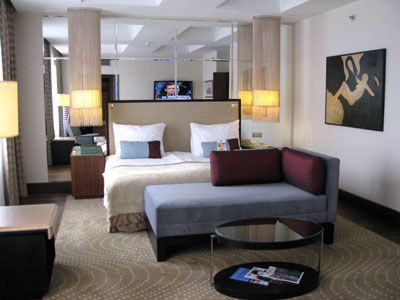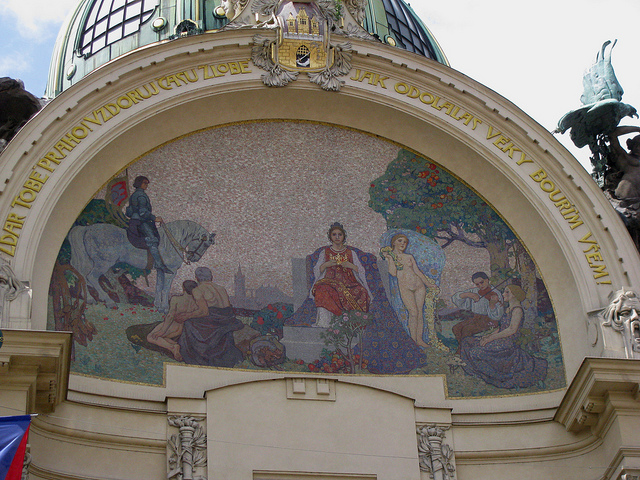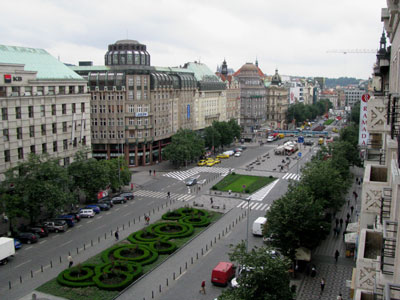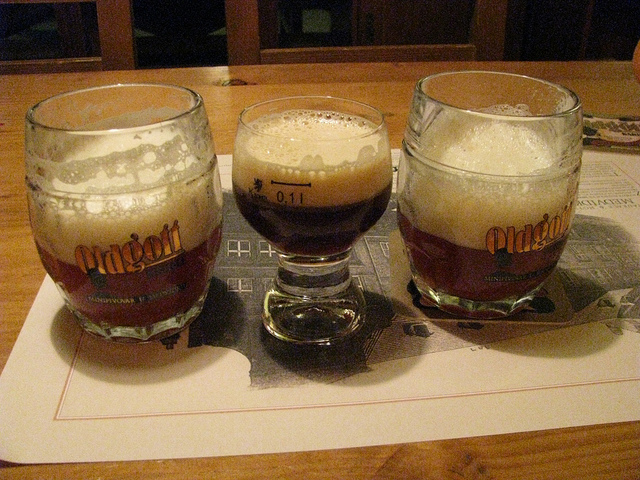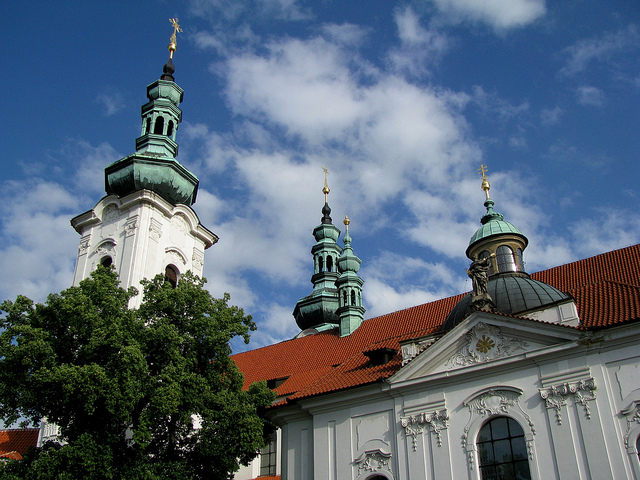Martina then showed me some amenities for the business visitors: the meeting rooms and conference areas on the second floor. Five salons are available for meetings, and the Crystal Ballroom is flooded with daylight. All salons can be opened up to the ballroom and a breakout area offers space for coffee breaks.

The Crystal Ballroom
Gorgeous pictures adorn the hallways and a special Art Deco-style font is used for all the hotel’s signs and letterings. The original grand marble staircase stretches from the top to the bottom of the building, and the metal railings are authentic Art Deco pieces.

The original 1930s marble staircase
It was getting close to lunch time right now, and Martina took me back to the main floor to show me the preparations in the kitchen. Head chef Roman Paulus and his crew were busy creating culinary delicacies for the lunch-time guests. Martina explained that the hotel offers very popular Sunday brunches as well as cooking classes for adults and children.

Head chef Roman Paulus
Roman was showing us some of the dishes that were being prepared: an amuse-bouche featuring scallops with vegetables; then monkfish – the daily special – accompanied by basil, polenta and zucchini. Lobster bisque was being stirred on the stove, and I asked the chef for his lunch time recommendation: filet of veal with white and green asparagus and a mushroom sauce.

My guide, Martina, and the hotel’s beverage manager
We then sat down at one of the tables in the La Rotonde Restaurant and I was looking forward to sampling some of the renowned cuisine. I started my lunch with a non-alcoholic Bellini, and the beverage manager explained to me that the Radisson Blu Alcron Hotel is unique in offering a water menu that contains more than 20 different brands, sorted by country of origin and mineral content. We tasted some Lauretana water from Tuscany which had the lowest mineral content. To prime our palate we enjoyed a selection of multi-grain breads accompanied by salted butter, olive tapenade and Budapest spread – a tasty cottage cheese spread with tomatoes and peppers.

Delicious olive tapendade and Budapest spread as an appetizer
I realized that history is never far away in Prague when Martina pulled out a book called “Hotel Alcron, Pametni Kniha” (Memory Book), which is a collection of old VIP signatures from the hotel’s guest book. The memory book itself was created by an unknown person and found in an antiques store in Prague. Its creation is shrouded in mystery.

Martina shoes me the Book of Memories
The book contains signatures from 1932 to 1948 and illustrates the history of Prague in dramatic ways: from European aristocrats, ambassadors and statesmen in the mid 1930s to German Army officers before and during World War II to Soviet officials in the post-war years, this memory book bears silent testimony to some of Prague’s most turbulent years.

Actor Maurice Chevalier signed the Alcron book in 1932
Celebrity signatures include actor Maurice Chevalier, US Army General Arthur McDouglas, Prince Eugene of Sweden, Thomas Cook – a member of the British Parliament and many other princes, ambassadors, actors. Martina explained that in the 1930s the Alcron Hotel was referred to as “The Palace” for its luxury features and it was the first hotel to compete with the glamorous establishments in Vienna and Berlin.

A delicious asparagus soup starts off the meal
After we finished our delicious asparagus soup, our main course had arrived and the restaurant manager Leon Klopp introduced the delicacies on our plates: veal tenderloin, green and white asparagus, young potatoes and sweetbread, the thymus gland of the calf, a very tender delicacy. Roman Paulus, the executive chef, sat down with us and I asked him to explain Czech cuisine to me. He clarified that Czech cuisine is very similar to Austrian and Bavarian cuisine: lots of pork, veal, venison, freshwater fish, dumplings and seasonal vegetables. The winter cuisine traditionally features sauerkraut,marinated and dried fruits as well as compotes. 40 years of Communism were not particularly kind to Czech cuisine as the country was plagued by many shortages, and fresh ingredients were hard to come by.

The main dish: veal tenderloin and sweetbread with white and green asparagus
Modern Czech cuisine still uses the same basic ingredients but is a lot lighter and healthier. Over the last 20 years Czech chefs have had a chance to experiment, and seafood has now become a popular item in upscale restaurants. The Alcron Restaurant is a fine dining destination and features a tasting menu with a menu that changes monthly. As one of the examples of its cuisine, Roman mentioned pork belly with prawns. The Alcron’s other restaurant, La Rotonde, offers international modern hotel cuisine with Czech accents.

Art Deco-inspired art at the Radisson Blu Alcron Hotel
After this informative culinary introduction Roman left to head back into the kitchen as we enjoyed our delectable lunch. I had thoroughly enjoyed my historic and culinary tour of the Radisson Blu Alcron Hotel and was now ready for my afternoon explorations: a walking tour of Prague’s famous Castle Hill!
